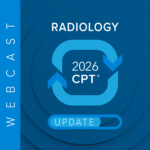For decades, clinical documentation integrity (CDI) programs have been synonymous with inpatient care. They evolved from early efforts to improve Diagnosis-Related Group (DRG) accuracy into essential engines of financial integrity and clinical transparency. Yet in 2025, as healthcare continues its pivot toward value-based reimbursement, risk-adjusted payment models, and population health, CDI can no longer remain confined within hospital walls. The future of CDI lies in the ambulatory and outpatient domains, where documentation integrity drives everything from reimbursement accuracy to quality scores, equity metrics, and patient outcomes.
This evolution isn’t just a trend; it’s a strategic necessity. As the Centers for Medicare & Medicaid Services (CMS) expands transparency and reporting requirements, ambulatory CDI has become the next frontier of compliance and clinical accuracy.
The roots of CDI stretch back to the late 1980s, when hospitals began aligning physician documentation with coding to improve DRG assignment and reflect patient acuity. Those programs were predominantly retrospective, involving the review of records post-discharge to clarify diagnoses that affected reimbursement. Today, however, healthcare organizations operate within interconnected networks of care. Patients move fluidly between hospitals, outpatient clinics, and telehealth environments, while their chronic conditions and social risk factors follow them across settings. In this ecosystem, documentation cannot remain siloed. The outpatient record has become just as important as the inpatient chart, forming the longitudinal view of a patient’s risk profile.
This paradigm shift has birthed a new focus, enterprise CDI, wherein programs extend their reach into physician practices, ambulatory surgery centers, and hospital outpatient departments. The goal is to ensure accuracy, completeness, and clinical integrity across every encounter.
Several market and regulatory dynamics are accelerating this movement. CMS continues to refine its Hierarchical Condition Category (HCC) risk-adjustment model, requiring annual validation of chronic conditions for Medicare Advantage (MA) and other value-based contracts. If a chronic condition such as diabetes with complications, heart failure, or chronic kidney disease is not revalidated each year, it essentially “falls off the radar,” leading to an inaccurate depiction of patient risk and lower reimbursement.
CMS’s Quality Payment Program (QPP) and other public reporting systems increasingly rely on outpatient documentation to measure quality and health equity. Documentation gaps not only affect reimbursement, but also distort an organization’s publicly reported performance. Commercial and government payors alike are expanding outpatient audit programs. Common targets include evaluation and management (E&M) leveling, medical necessity, and modifier use. Without CDI oversight, these encounters are vulnerable to denials and recoupments that erode revenue integrity. Natural Language Processing (NLP), artificial intelligence (AI)-based review tools, and integrated electronic health record (EHR) prompts are making ambulatory CDI scalable. For the first time, organizations can use real-time analytics to identify missing specificity or chronic condition capture before a claim is submitted.
Nowhere is this more evident than in E&M coding, the backbone of outpatient reimbursement. Since CMS revised the E&M guidelines in 2023 and 2024, documentation no longer depends on history and exam alone; it now hinges on medical decision-making (MDM) or total time.
A practical example illustrates the stakes. Consider two follow-up visits for a patient with type 2 diabetes. One provider documents a straightforward encounter focused solely on medication refills and blood glucose logs, a typical CPT 99213 scenario. Another provider documents adjustments to insulin therapy, lab review, and management of new neuropathic symptoms. That visit warrants a CPT 99214, reflecting moderate complexity. The difference between these codes represents not only reimbursement variance, but also the accuracy of risk reporting for the patient’s overall health status. Outpatient CDI ensures that physicians articulate the nuances of MDM, link conditions to clinical decisions, and validate time when it determines the code level.
While inpatient CDI teams often rely on query workflows and concurrent review, ambulatory CDI depends on proactive collaboration and real-time education. Physicians are often unaware of how documentation nuances affect coding and risk capture. CDI specialists act as translators, connecting clinical reasoning with coding precision.
Effective programs start by identifying target specialties where documentation gaps have the greatest financial and clinical impact: primary care, cardiology, endocrinology, oncology, and behavioral health. From there, CDI professionals embed themselves in the clinical environment, offering education on chronic condition specificity, E&M leveling, and HCC relevance.
AI-driven CDI tools are transforming how outpatient documentation is monitored. Algorithms can flag missing specificity, suggest chronic condition validation, and identify inconsistent coding patterns. But as with inpatient CDI, technology must remain a partner, not a replacement. A well-governed ambulatory CDI program integrates automation for detection, but relies on human judgment for validation. The final record should always reflect the provider’s clinical reasoning, not an AI prediction. Health Information Management (HIM) leaders must insist on audit trails, transparency, and human signoff when using AI-assisted documentation platforms.
The compliance dimension of ambulatory CDI cannot be overstated. The U.S. Department of Health and Human Services (HHS) Office of Inspector General (OIG) has repeatedly highlighted outpatient coding and documentation in its Work Plan, citing frequent errors in medical necessity justification and MDM support. As outpatient E&M and HCC audits rise, CDI professionals serve as a preventive layer, identifying gaps before claims submission. They ensure that documentation tells a complete story, linking symptoms, diagnostics, and treatments to the underlying conditions that justify the encounter.
One large multi-hospital health system recently expanded its CDI program to include 40 ambulatory clinics across three regions. Within the first six months, CDI specialists focused on three key areas: HCC validation, diabetes specificity, and accurate E&M leveling. The results were striking. Chronic condition revalidation improved by 22 percent, average risk scores rose by 0.16 points, and documentation-related outpatient denials fell by nearly 30 percent.
As CDI expands across care settings, governance becomes crucial to sustainability. Health systems must establish standardized documentation guidelines, query processes, and performance metrics that apply across inpatient, outpatient, and professional services. Governance committees that include HIM, compliance, revenue integrity, coding, and clinical leadership ensure alignment between policy and practice. CDI dashboards should measure not just query response rates or financial impact, but also chronic condition revalidation rates, E&M accuracy, and quality data completeness.
The expansion of CDI into outpatient settings represents a defining moment for HIM leadership. It demands a shift from department-level operations to system-level strategy. HIM and CDI executives must articulate the value proposition of enterprise CDI in terms of compliance protection, audit readiness, and patient care alignment.
The next generation of CDI programs will blend analytics, education, technology, and governance to create a unified documentation integrity framework. This evolution will require investment, collaboration, and ongoing cultural change, but the payoff is expected to be significant.
When documentation integrity extends beyond the hospital, organizations don’t just protect revenue; they elevate their entire standard of care.
Programming note:
Listen when Angie Comfort cohosts Talk Ten Tuesday at 10 Eastern with Chuck Buck.













